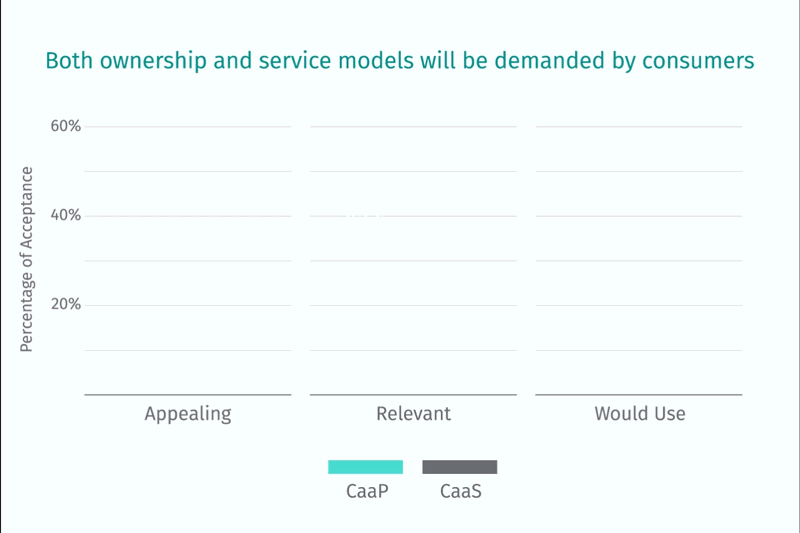More grit, more brains, more thrill: Why Formula Student beats pro racing
HERE Technologies — 25 August 2025
7 min read
21 December 2016

The first in a series of posts discussing the study’s findings, we look at multi-modal mobility solutions. As the end-to end mobility needs of consumers grow, we find that multi-modal mobility will be the next great venture for automakers.
Indeed, the mobility landscape is changing as a result of the proliferation of smart devices and apps that make Car-as-a-Service (CaaS) offerings like ride sharing an easy and cost-effective means of getting from A to B.
Once autonomous vehicles become ubiquitous, people will demand both autonomous car ownership, or Car-as-a-Product (CaaP), and autonomous CaaS, forcing automakers to consider how best they can offer these services. The challenge automakers face is how to sell not only the vehicles themselves, but also mobility services.
So, how much will automation truly impact car ownership?
There is still a huge consumer demand for car ownership, with 84 percent of car-owning respondents saying that owning a vehicle is of importance to them, and automation is only set to make CaaP more attractive.
The argument for this is that manually driven cars result in hours of ‘dead time’, time where drivers can do nothing but exactly that. An autonomous car, on the other hand, frees up this time, and 77 percent of people interviewed said they would use autonomous cars to relax during long/congested trips.
Indeed, consumers envision autonomous cars offering the chance to be a ‘passenger’ again – relaxing, socialising or being productive instead of focusing on the act of driving.
The individuals surveyed also believed that autonomous cars would reduce compromise, allowing the ‘passenger’ to benefit from end-to-end transportation at their convenience, without the hassle of finding a parking space or other common transport frustrations. The fact that 40 percent of respondents stated that an autonomous vehicle would result in a more comfortable, less stressful journey, was telling.
So, it looks like autonomous CaaP is set to be big. But what about autonomous CaaS?
Autonomous CaaS refers to an on-demand service deploying fully autonomous vehicles. This model without full automation also exists today – in the form of taxis, car sharing and ride sharing.
There is a huge demand for CaaS, and the autonomous iteration promises to be both affordable and flexible, offering people the freedom to use cars on their own terms - when they want them, where they want them, at an affordable price.
In fact, 64 percent of respondents said that they would use CaaS because it is cheaper than taxis or ride sharing, and it would give them freedom to travel whenever they want to.
Autonomous CaaS would also benefit those who cannot drive, bringing mobility to the young, the old, and the disabled.
What we can divulge from the findings is that people aren’t demanding either autonomous CaaS or CaaP, but both. The trends identified in the survey show that, in the future, these models will exist side-by-side, as people prefer to have different options for different travel journeys and occasions.
Indeed, we may be set to see fundamental changes in the way consumers use their vehicles.
Due to the changes the automotive industry is seeing, people’s relationship with cars is likely to evolve. As autonomous cars take over and driving is no longer a necessity, we predict that people will likely embrace driving in a different way.
As everyday uses for cars, like shopping or commuting, are gradually replaced by autonomous vehicles, manual driving is more likely to become a hobby. Whether it’s long drives through the country or weekend road trips, we expect and hope to see people’s love of the car rekindled.
A recent white paper stated that, in the long-term future, autonomous vehicles will become universal, and manual driving will become restricted. With this shift, we will see the car transform from a mobility device to a tech or leisure device.
This prediction is further supported by our research findings – with half of the respondents showing significant interest in autonomous cars in general, and a role for both autonomous CaaP and CaaS in the future.
Automakers then, must see a car as a part of a bigger mobility portfolio, with CaaS and CaaP playing different roles - while you may own a car, that doesn’t mean you don’t use car sharing services.
OEMs should start thinking of selling a car and a mobility service agreement, to address the fact that the question is no longer whether an ownership or service model is the more likely path. Instead, it’s how to create mobility solutions that embrace both.
While we found that some people struggle to imagine how these cars will integrate into current infrastructure, and the perceived lack of control with autonomous cars is a barrier, the inevitability of the autonomous vehicle means that CaaP and CaaS must be considered now if automakers are to stay in touch with industry trends.
With many technology companies and automakers claiming to have autonomous vehicles available by 2018, what kind of impact can we expect? Will consumers buy into the idea of owning an autonomous car or simply settle for the service model as an alternative mode of transportation? Let us know your thoughts in the comments below.

Dora Heinkel
Share article

Dora Heinkel
HERE Technologies — 25 August 2025
HERE Technologies — 18 August 2025
Maja Stefanovic — 11 August 2025
Why sign up:
Latest offers and discounts
Tailored content delivered weekly
Exclusive events
One click to unsubscribe

